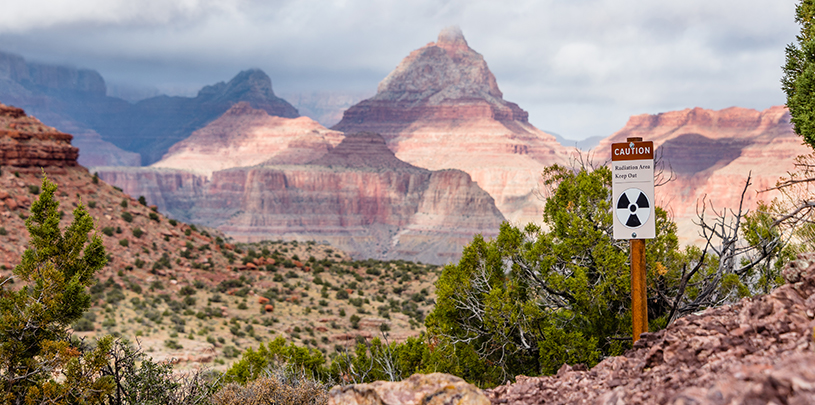
by Amber Reimondo, Energy Director
In an announcement today, the Department of Energy released the long-awaited strategy from the Nuclear Fuel Working Group, which was charged with developing recommendations to revive and expand domestic nuclear fuel production. President Trump established the working group last summer when he declined to impose trade measures requested by uranium companies to force domestic and U.S. government utilities to buy their product.
The strategy released today includes a few components that may have implications for the Grand Canyon region.
A company with operations near Grand Canyon National Park, including one mine with ongoing environmental problems, has expressed hope over the past several months that the working group would bring about “immediate relief” in the form of tax dollar support for its operations. While the strategy doesn’t appear to offer quite the “immediate” relief the company hoped for, it does call for a domestic uranium reserve to be built out over the next 10 years through government purchases of uranium from domestic mining operations.
In other words, the strategy calls for Congress to allocate taxpayer dollars to purchase U.S.-mined uranium, which is lower quality than uranium from countries like Australia and Canada, and thus more expensive to produce and for which there has not been a meaningful market in decades. This objective is reflected in President Trump’s budget proposal to Congress earlier this year where he requested $150 million per year for 10 years for the purposes of building out a U.S. uranium reserve.
In step with the administration’s critical minerals strategy released last summer, the working group’s report calls for streamlining regulations intended to safeguard the environment and the interests of Native American communities. This could have far-reaching implications for the Grand Canyon region, from attacks on the current mining ban around Grand Canyon National Park, to minimizing review of future mining proposals.
In particular, the group’s strategy targets the landmark National Environmental Policy Act (NEPA) and the National Historic Preservation Act (NHPA), which requires consultation with tribal governments prior to approval of actions that would impact them. The working group report even goes so far as to suggest that uranium mines should be considered for “categorical exclusions” from NEPA. Categorical exclusions amount to a determination that uranium mining operations do not have significant effects on the human environment, and therefore require neither environmental assessments nor environmental impact statements to move forward.
Today’s announcement by the administration comes less than a week after the Western Congressional Caucus, led by Arizona Congressman Paul Gosar, sent a letter to President Trump requesting that the administration lift the current mining ban around the Grand Canyon.

In 2012, the secretary of the interior put a temporary stop to uranium exploration by issuing a 20-year ban on new uranium mines on one million acres of public lands surrounding the Grand Canyon. There are still 800 active mining claims on national forest and other public lands around the Grand Canyon, but legislation is working its way through Congress to permanently stop new uranium mining around the park.
The working group’s strategy seeks to undermine important regulations and expand access to uranium deposits on public lands, and it puts land protections, like the Grand Canyon mining ban, at risk.
The Trust continues to monitor actions by the administration and Congress to ensure that attempts to undermine the current mining ban are met with swift opposition. Meanwhile, the Grand Canyon Centennial Protection Act — a bill that will make the temporary ban permanent — remains in the Senate after its passage in the House late last year. The senate bill still needs additional co-sponsor support, so if you’re able, now is a good time to call your senators and ask them to support S. 3127.
Act now. Urge your senators to support, co-sponsor, and push for a committee hearing for S. 387, the Grand Canyon Protection Act, to permanently ban new uranium mines on public lands around the Grand Canyon.
80% of Arizona voters support Baaj Nwaavjo I'tah Kukveni National Monument, according to a new poll.
Read MoreThe Colorado River below Glen Canyon Dam is heating up. Find out why.
Read MoreGroundwater pumping at a uranium mine near the Grand Canyon will affect the canyon's springs, scientists says.
Read More